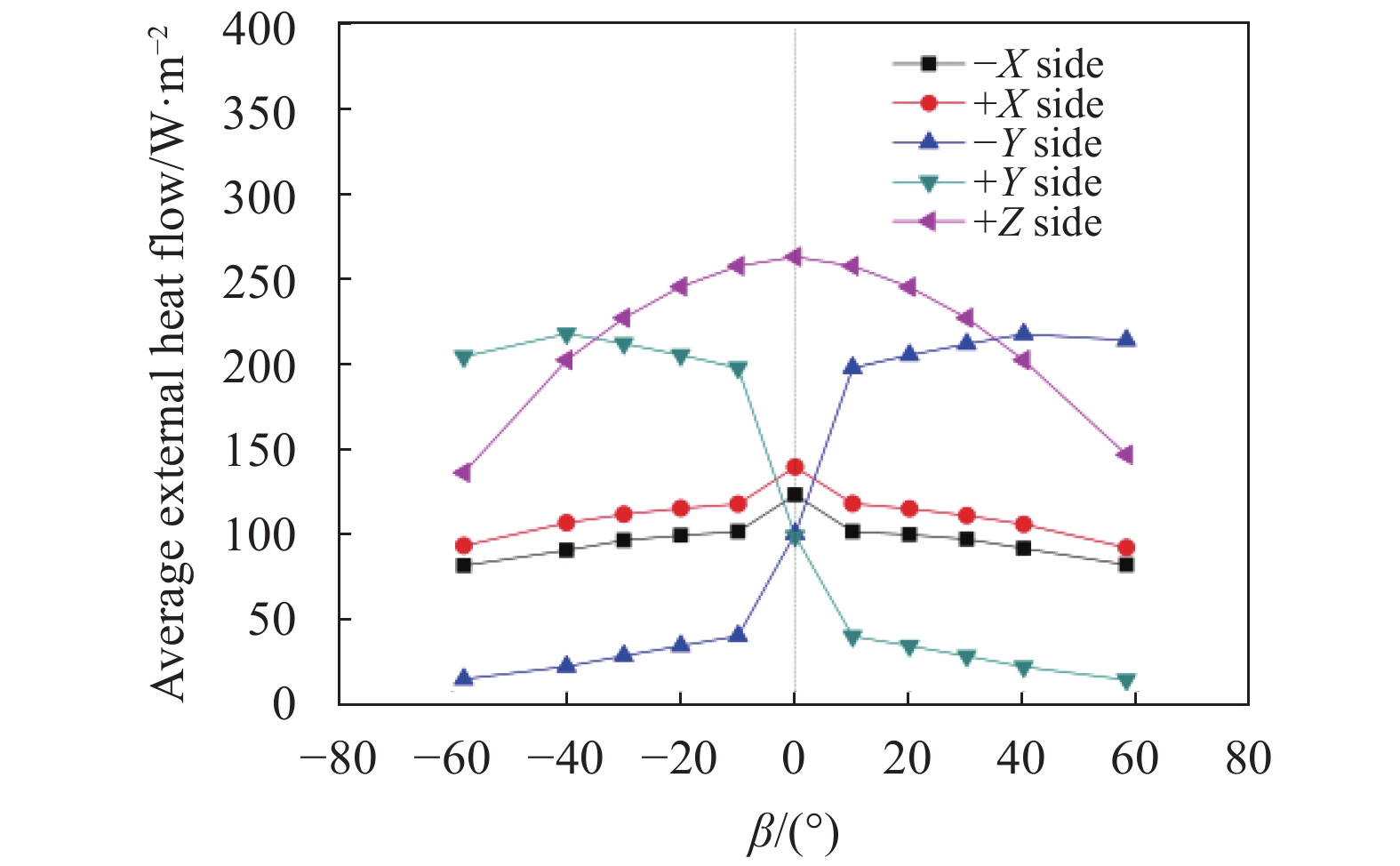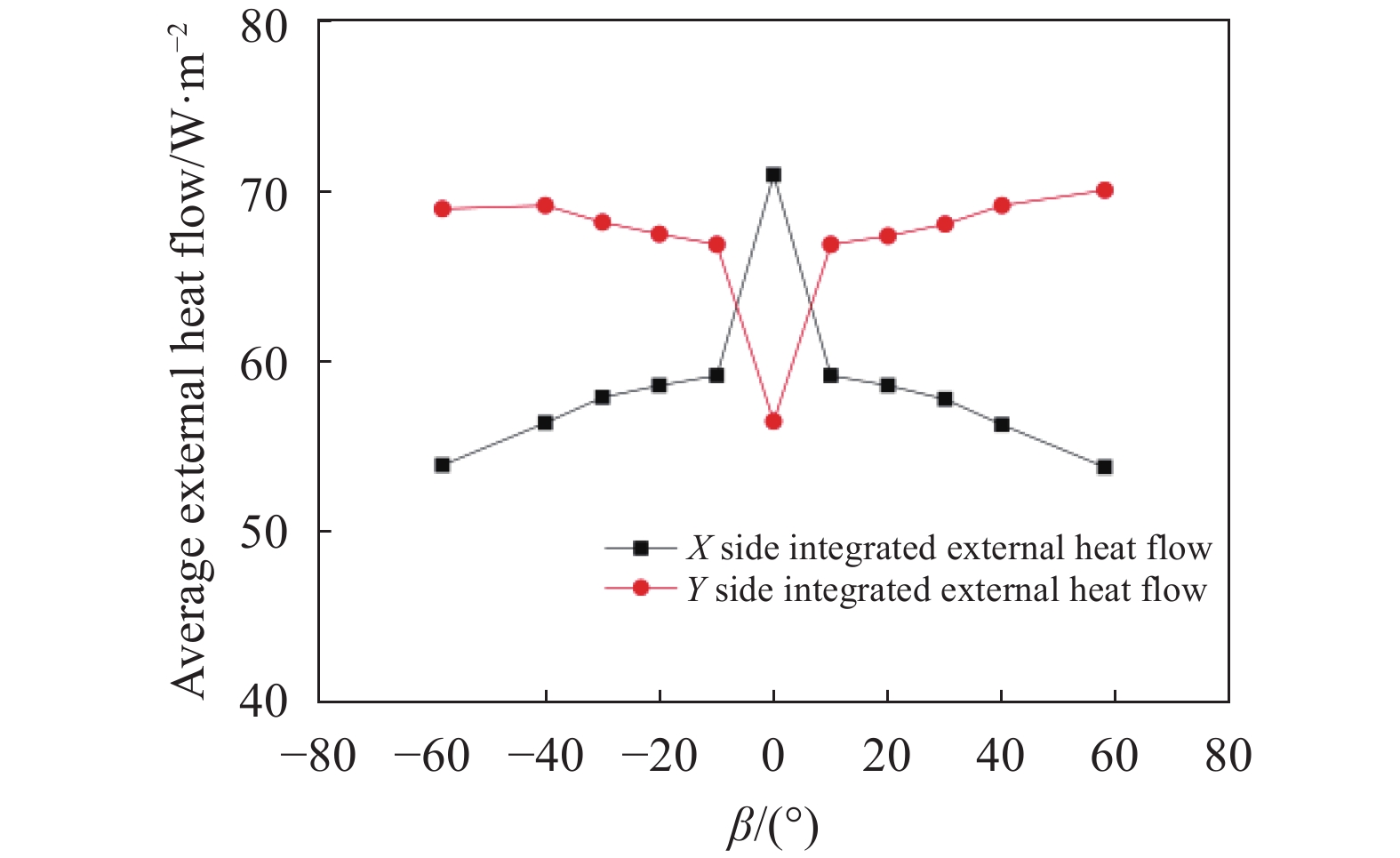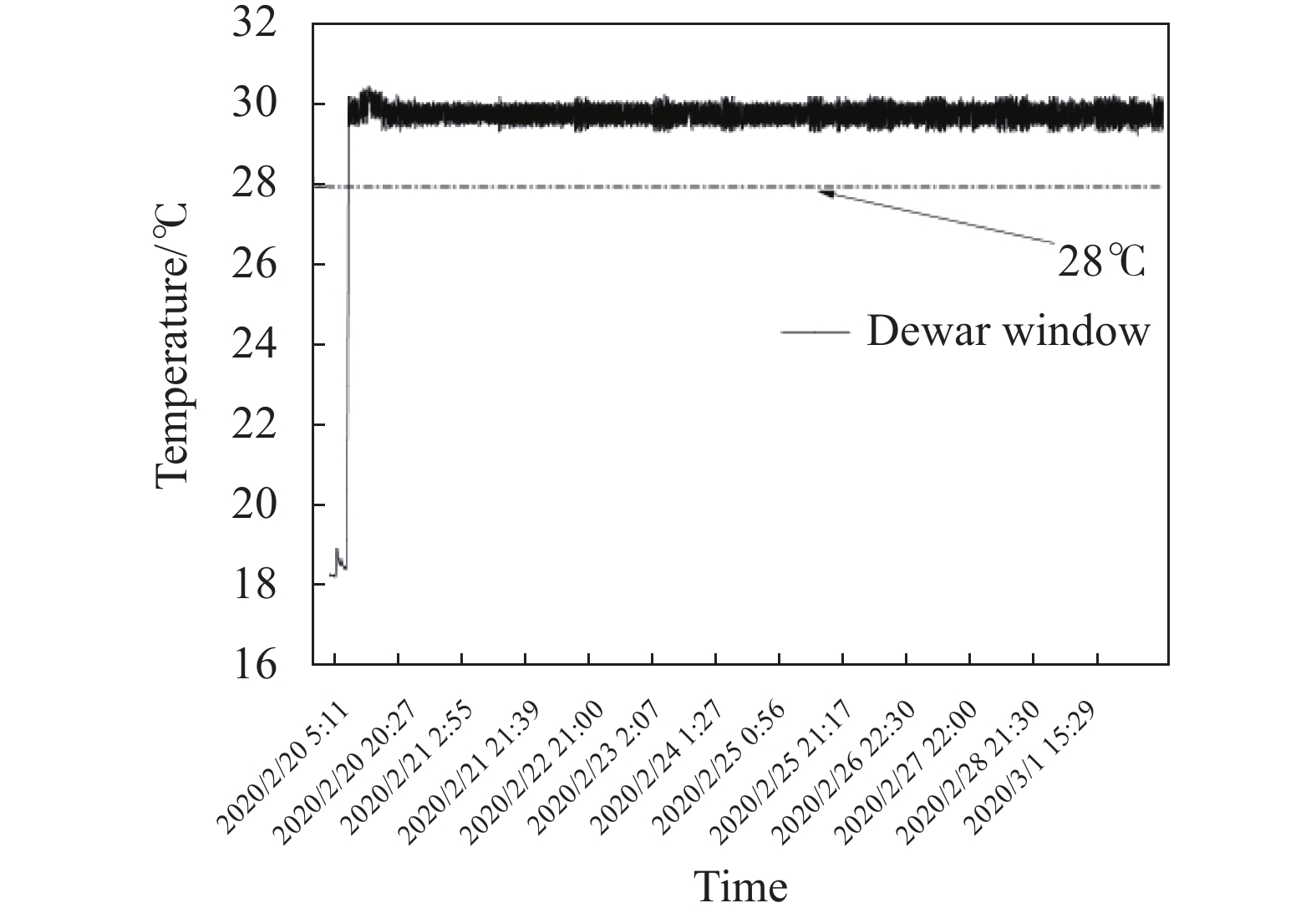-
某新型对地观测空间相机随新技术试验星成功发射入轨。该载荷为离轴式红外光学系统,对温度变化要求非常高,一方面温度变化会引起材料物理属性变化以及热变形,导致遥感器视轴漂移和波前畸变等影响成像质量[1],另一方面自身热辐射发生变化降低光学系统的探测灵敏度[2-3]。为保证高质量的成像,相机在轨工作时需要光学系统满足较高的温度指标要求。相机主要的温度扰动源一方面来自宇宙深冷空间及外热流(太阳辐射、地球红外、地球反照),另一方面来自相机内部热源的发热,例如低温红外探测器配备的大功率制冷机等。热控系统的目的就是统筹管理相机内外部热量,保障相机达到合适的温度指标要求[4-5]。
该相机运行于低轨倾斜圆轨道,为非太阳同步轨道,全寿命周期内太阳光与轨道面夹角β角(太阳与轨道面的夹角)变化很大,在−58.4°~58.4°之间。一些研究者对该类型轨道的卫星平台外热流进行了分析,认为该轨道外热流非常复杂[6],热流扰动大,无稳定背阴面,对热控系统的研制带来了很大难度[7]。宁献文等提出基于传统被动热控设计思路的组合式散热面优化设计方法[8]。黄金印等提出了以散热面吸收外热流最小为目标函数,并基于六面体卫星的散热面建立了最优化设计模型[9]。目前,该相机所用轨道较多适用于电子载荷等不受光照条件限制对地全时域观测卫星[10]。光学载荷由于温度指标较高,较少应用在该轨道。针对该载荷,主要的热控需求包括:光学系统温度范围较窄,要求保持在(18±2) ℃,其中调焦镜指标要求在(18±1.2) ℃;温度稳定性指标较高,要求达到±0.3 ℃/轨;红外低温探测器配套的大功率制冷机需要进行高效散热。在如此复杂的轨道外热流环境条件下要满足以上条件,对热控系统的研制带来极大的挑战。
为解决低轨倾斜圆轨道相机的热控难题,文中对某轨道上的相机进行热分析,给出该相机热控设计方案。热控系统经过地面热平衡试验和在轨飞行验证,证明了相机热控系统设计的正确性和合理性。
-
该相机采用离轴三反光学系统,空间分辨率高,口径大,主镜口径达到Ф500 mm。相机主体尺寸大,主次镜间距达到800 mm。相机构型示意图见图1,由光学系统、调焦组件、探测器组件、制冷机、主承力结构、遮光罩和热控系统等组成。相机采用了轻质高强度的碳纤维增强复合材料主体结构以及高刚度的碳化硅镜坯材料以满足载荷的重量要求。
为了确保光学系统在轨温度波动条件下的成像质量,要求各反射镜之间位置相对稳定。根据光学系统公差分析,最敏感的主次镜间距变化不得超过5 μm,各反射镜面形必须保持优于1/30λ,由此对相机热控提出了指标要求,见表1。
Components Thermal control index Baffle −100-80 ℃ Main load bearing structure 10-24 ℃ Main mirror, second mirror, third mirror (18±2) ℃,stability better than ±0.3 ℃/orbit Focusing mirror (18±1.2) ℃,stability better than ±0.3 ℃/orbit Pulse tube, refrigerator −35-15 ℃,stability better than ±5 ℃/orbit Dewar components >28 ℃ (Heating decontamination stage) Table 1. Thermal control index of the camera main components
相机安装在卫星+Z舱板,处于整星舱外,卫星的相机安装面温度范围为−5~25 ℃,载荷舱外温度为−90~90 ℃ (太阳帆板温度不超过93 ℃)。相机内热源主要是焦面制冷机,成像工作时制冷机功耗130 W,待机工作时100 W,压缩机、热端热耗分配比为1∶2。
针对以上相机情况和设计输入分析相机热控系统设计研制任务难点:
(1)轨道外热流变化复杂,热流分析难度大。该相机工作于低轨倾斜圆轨道,在运行寿命周期内,阳光与轨道面的夹角变化幅度大,按照常规三轴稳定姿态运行,无稳定背阴面,各侧面均会受到太阳直射,轨道外热流的变化比太阳同步轨道复杂。而外热流分析是热设计的基础,确定热设计的极端工况设置和散热面的选取,复杂的轨道外热流变化增加了分析难度。
(2)相机光学系统温度指标高。主、次、三镜要求在(18±2) ℃范围内,调焦镜要求在(18±1.2) ℃范围内。光学系统要求达到0.3 ℃/轨的稳定度要求。离轴式光学系统造成载荷非对称的特点,增加了热控设计难度。
(3)相机内热源散热设计难度大。相机要保证全天候工作,相机内部制冷机需要维持长期工作且发热功耗大。外热流复杂多变,增加了内热源散热设计的难度。
-
该相机运行于低轨倾斜圆轨道,轨道倾角为35°,轨道高度500 km左右,β角在−58.4°~58.4°之间变化。为降低轨道环境对热控设计的影响,确定在轨姿态策略为:非工作时段,卫星在阳照区为负Z对日,阴影区为三轴稳定对地姿态,相机工作时,恢复三轴稳定对地成像姿态。
该姿态调整策略为相机在光照区非工作时段提供了除-Z侧面外,入光口和X,Y的稳定背阴面可以考虑作为内热源的散热面。阴影区三轴稳定对地姿态,利用阴影区地球红外加热作用,减少相机阴影区的热控主动补偿功耗,节省资源。
姿态调整的策略使得相机在轨外热流分析的状态变得复杂,需要详细分析确定散热面方位和相机极端工况设置。借用Thermal Desktop热仿真分析软件,对相机在轨运行姿态在不同β角下的外热流进行仿真分析,得到太阳辐照和地球红外到达相机各表面总和的轨道周期平均外热流随β角的变化趋势,并与正常姿态的相机外热流进行了对比,如图2和图3所示,分析如下。
(1) 采取姿态调整使相机轨道外热流环境有所改善。整个在轨寿命周期内,除−Z面各表面在相同β角情况下,周期平均外热流明显降低,为相机散热设计提供优化方向,降低热控资源需求。
(2) +Z面,+X面,−X面周期平均外热流随β角变化趋势是以β为0°呈现对称的趋势,且随着与β为0°的距离增加,轨道周期平均外热流为单调下降趋势。因此,β为0°时,+Z入光口和±X面,周期平均外热流为极大值,β为−58.4°或者58.4°,周期平均外热流为极小值。
(3) ±Y面整个在轨寿命周期内,周期平均外热流变化幅度较大。+Y面周期平均外热流随β角变化情况整体大致呈现下降趋势,但在−40°附近存在拐点。−Y面周期平均外热流随β角变化与+Y面相反,−Y面对应的在40°附近存在拐点,±Y面变化呈现以β为0°轴对称的趋势。
相机工作时,恢复三轴对地姿态。在阴影区时不会受到太阳照射,但在阳照区工作时,X、Y侧面在整个寿命周期内依然无稳定背阴面,出现太阳直射的情况,分析如下:
(1)相机工作时,对于Y侧面在轨道周期内,当β>0°,−Y侧受到太阳直射;β<0°时情况相反,+Y侧受到太阳直射。
(2)相机工作时,对于X侧面在轨道周期内,在上午弧段,+X侧受到太阳直射;下午弧段情况相反,−X侧受到太阳直射。
-
相机在轨可实现全天时工作,所处的低轨倾斜圆轨道内外热流扰动较大,且相机光学系统的温度稳定性要求较高。相机在轨运行除姿态策略进行了调整外,还采取了间接辐射控温,散热面耦合散热等热控措施保障相机光机主体满足工作温度指标要求。
-
采用间接辐射控温技术保障相机光学系统的温度稳定性达到±0.3 ℃/轨的指标要求。间接辐射控温是借助周围的辅助结构件对被控对象进行主动控温,通过辐射热交换的方式实现被控对象高精度温控技术[11]。A、B物体之间辐射换热的通过公式(1)计算。相同温度水平下,辐射热阻要远远大于对流热阻和导热热阻,通过控制A的温度间接辐射控制B的温度,使得B的控温具有较好的鲁棒性,该方法在高分二号相机等多个型号热控中已得到在轨验证[4, 12]。
式中:
${q_{ab}}$ 为A、B物体之间的辐射换热量;${\varepsilon _a}$ 为A物体红外发射率;${A_a}$ 为A物体辐射换热面积;${B_{ab}}$ 为Gebhardt辐射交换因子;$\sigma $ 为斯蒂芬-玻耳兹曼常数,5.67×10−8 W/(m2K4);${T_a}$ 、${T_b}$ 分别为物体A、B表面温度。在该任务中,相机光学系统通过借助复材主体框架的结构表面以及针对主镜、三镜、次镜、调焦镜等支架组件设置专门的热罩等结构,通过主动加热的方法对相机光学系统进行间接辐射控温。同时在相机外侧、热罩的外侧、相机内部焦面和制冷机热端的外侧均包覆多层隔热组件,最大程度地减少轨道环境外热流和相机内部内热源的热流干扰,保障光学系统的温度稳定性。
-
相机内部最大热源为焦面组件的制冷机热端,设计功耗成像工作时86.7 W,待机时66.7 W。为了消除制冷机压缩机发热和振动对相机主体结构的影响,将制冷机压缩机放置在了相机外侧,固定在整星舱板上,设计功耗成像工作时43.3 W,待机时33.3 W。为保证焦面探测器冷量需求,制冷机温度指标需要保持在−35~15 ℃之间。发热功率大,外热流复杂,需要设计合适的热量传输散热通路。
根据相机轨道外热流和相机工作时卫星受晒情况的分析,采用散热面耦合散热的方案。相机±X侧面和±Y侧面耦合后周期平均外热流随角度变化的趋势如图5所示。另外考虑太阳帆板在相机±Y侧面,两侧面受到太阳帆板施加的额外红外辐射热流最大在70 W/m2左右。因此选取±X面耦合的方案作为相机内热源的散热面,选用在轨性能稳定的OSR作为散热面涂层,±X侧各0.4 m2。
制冷机热端和压缩机热量散热路径设计如图6所示。采用槽道热管将热量分别引至±X侧散热面,热端使用四根热管,压缩机使用两根热管。热端侧四根热管采用交叉错位的方式安装,防止单侧散热面受晒时造成热端温度分布不均的情况。
-
相机入轨初期,焦面组件窗口玻璃温度较低,为了防止入轨初期污染物向窗口玻璃汇集,需要对其进行加热去污。因此在焦面组件杜瓦窗口附近布置一路加热功率18 W主动加热回路,保证相机入轨初期焦面组件杜瓦窗口温度不低于28 ℃,同时对焦面组件进行隔热包覆,隔离焦面组件温度波动对相机内部光学系统的干扰。
-
地面研制阶段,通过真空环境模拟室对相机进行真空热平衡试验是验证热控系统设计正确性与合理性的有效手段。为此,在相机研制过程中进行了充分的热平衡试验验证,表2为相机根据在轨工作模式和轨道环境选取的极端工况。
Case Orbit external thermal flux Temperature boundary Operating mode Case 1 Minimum Low temperature boundary Heating decontamination mode Case 2 Minimum Low temperature boundary Standby mode Case 3 Maximum High temperature boundary Normal operation mode Table 2. Thermal balance test cases
图7为相机光学系统入轨稳定后三天内的温度变化曲线,光学系统整体维持在18~19 ℃之间,温度波动优于±0.3 ℃/轨。加热去污阶段,热平衡试验和在轨阶段的杜瓦窗口温度均保持在28 ℃以上,图8为入轨加热去污阶段10天左右的杜瓦窗口玻璃的温度变化曲线。表3为相机热平衡试验结果与在轨温度数据。可以看出,当前热控系统的设计,相机各部分组件温度均满足技术指标要求,热控设计合理,仿真分析正确。
Components Thermal balance test/℃ In orbit temperature/℃ Temperature stability/℃·orbit−1 Index satisfaction Case 2 Case 3 Main mirror 18.6-18.7 19.3-19.6 18.7-18.9 <±0.3 √ Second mirror 18.3-18.6 18.3-18.5 17.8-18.2 <±0.3 √ Third mirror 18.8-18.9 18.9-19.1 18.7-18.9 <±0.3 √ Focusing mirror 17.8-18.1 18.4-18.8 18.2-18.7 <±0.3 √ Baffle 3.8-4.4 6.3-10 7.6-12.3 − √ Main load bearing structure 16.8-19.7 17.2-20.4 17.1-20.2 − √ Refrigerator compressor −32.8- −31.9 −13.2- −11.8 −23.6- −18.3 <±5 √ Refrigerator hot end −32.2- −31.4 −18.7- −11.6 −15.8- −11.5 <±5 √ Table 3. Temperature data of thermal balance test and in orbit
-
文中根据低轨倾斜圆轨道运行的某相机在轨工作模式和温度指标要求,分析了相机热控研制任务的重点和难点。详细分析了低轨倾斜圆轨道的外热流的特点,通过采取在轨工作姿态调整策略,满足了相机在轨成像需求,降低了热控系统资源需求。该相机热控设计方案采用间接辐射控温、散热面耦合排散热等措施,辅助其他常规热控措施。相机热平衡结果和在轨飞行温度数据表明,热控系统设计合理可行,很好地满足了相机在低轨倾斜圆轨道成像的温度要求,为后续在低轨倾斜圆轨道运行的光学遥感载荷提供了工程化经验参考。
Thermal design and test for space camera on inclined-LEO orbit
doi: 10.3788/IRLA20200332
- Received Date: 2020-09-04
- Rev Recd Date: 2020-12-17
- Publish Date: 2021-05-21
-
Key words:
- space infrared camera /
- thermal design /
- thermal balance test /
- in orbit test /
- inclined-LEO orbit
Abstract: A novel earth observation space infrared camera has been successfully launched into orbit by a test satellite. The inclined-LEO orbit for the camera is not a sun-synchronous orbit, and thus the variation of external heat flux for the space load is extremely complicated. In order to guarantee the camera operating stably in orbit, high temperature stability for the optical system and the load-carrying construction and large power pulse tube cryocooler of low temperature infrared detector are both required. The complicated orbit heat flow and high stability thermal control indexes brought a big challenge for the thermal design. Based on the thermal control index and the space environment, the characteristic of the thermal design was analyzed and the team proposed a set of measures to meet the targets, like attitude maneuver, indirect radiant thermal control and coupled radiating surface. The thermal balance test result and in-orbit temperature data both indicated the thermal stability of the optical system was better than ±0.3 ℃ for each orbit within the temperature level of (18±2) ℃. Results shows that the thermal design is reasonable and practicable, and the space infrared camera works in good condition in orbit.



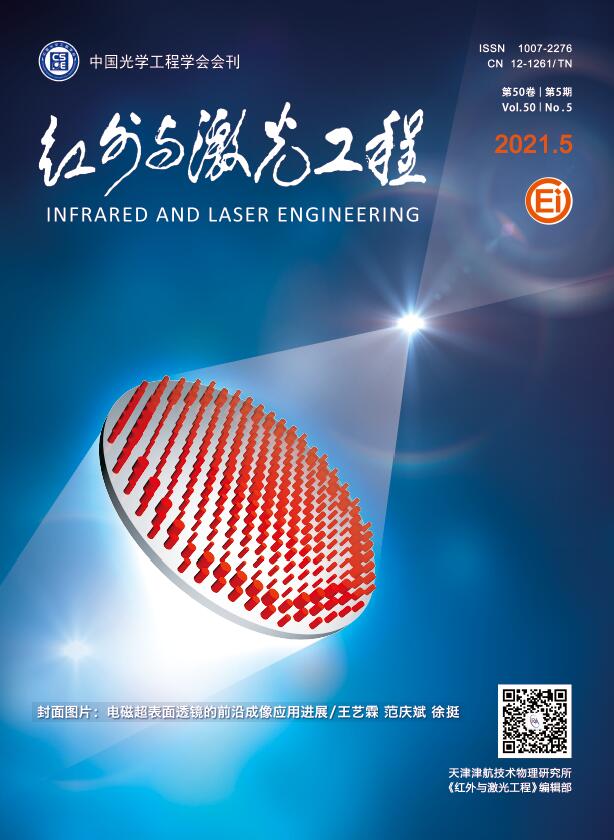





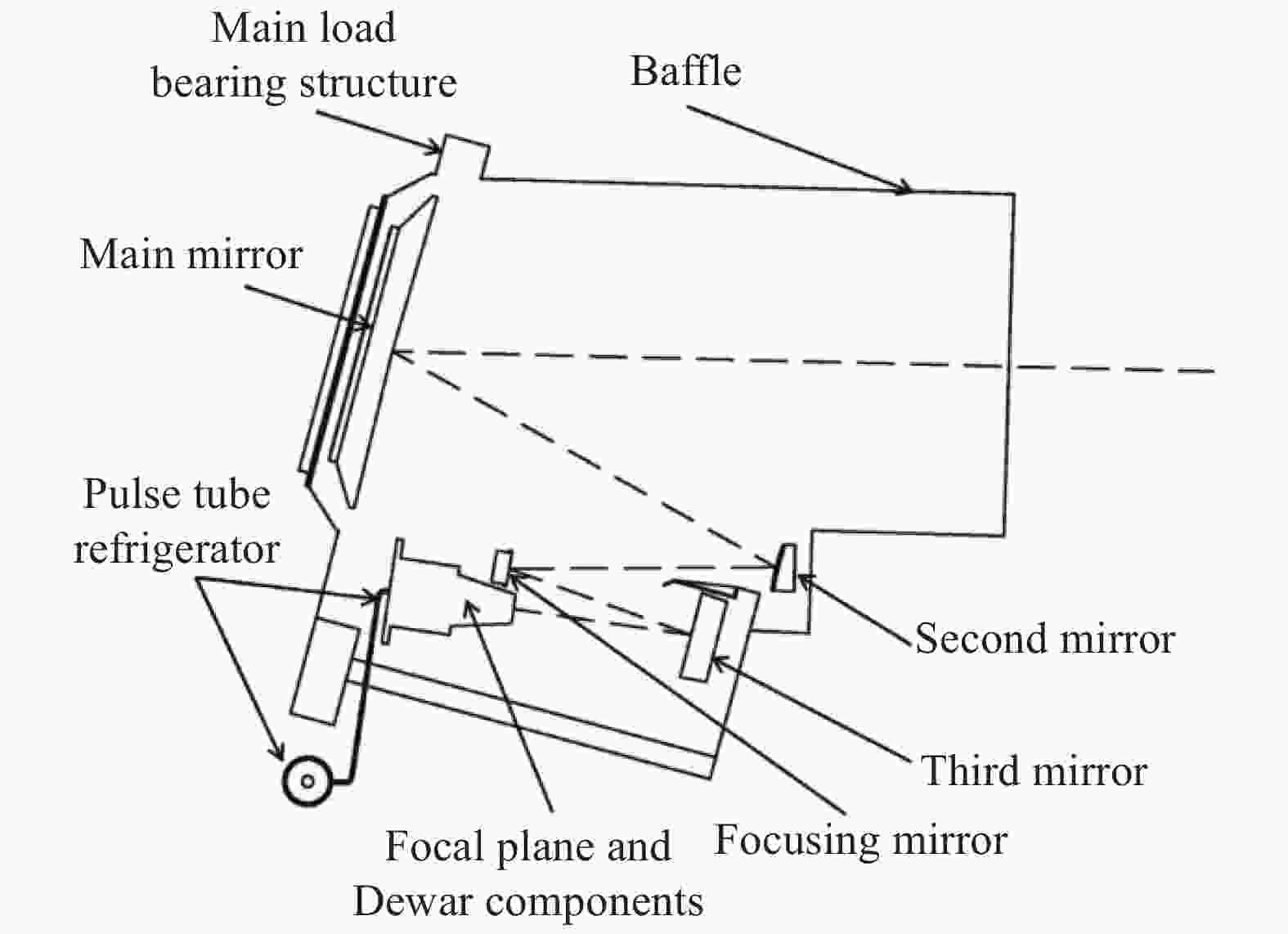

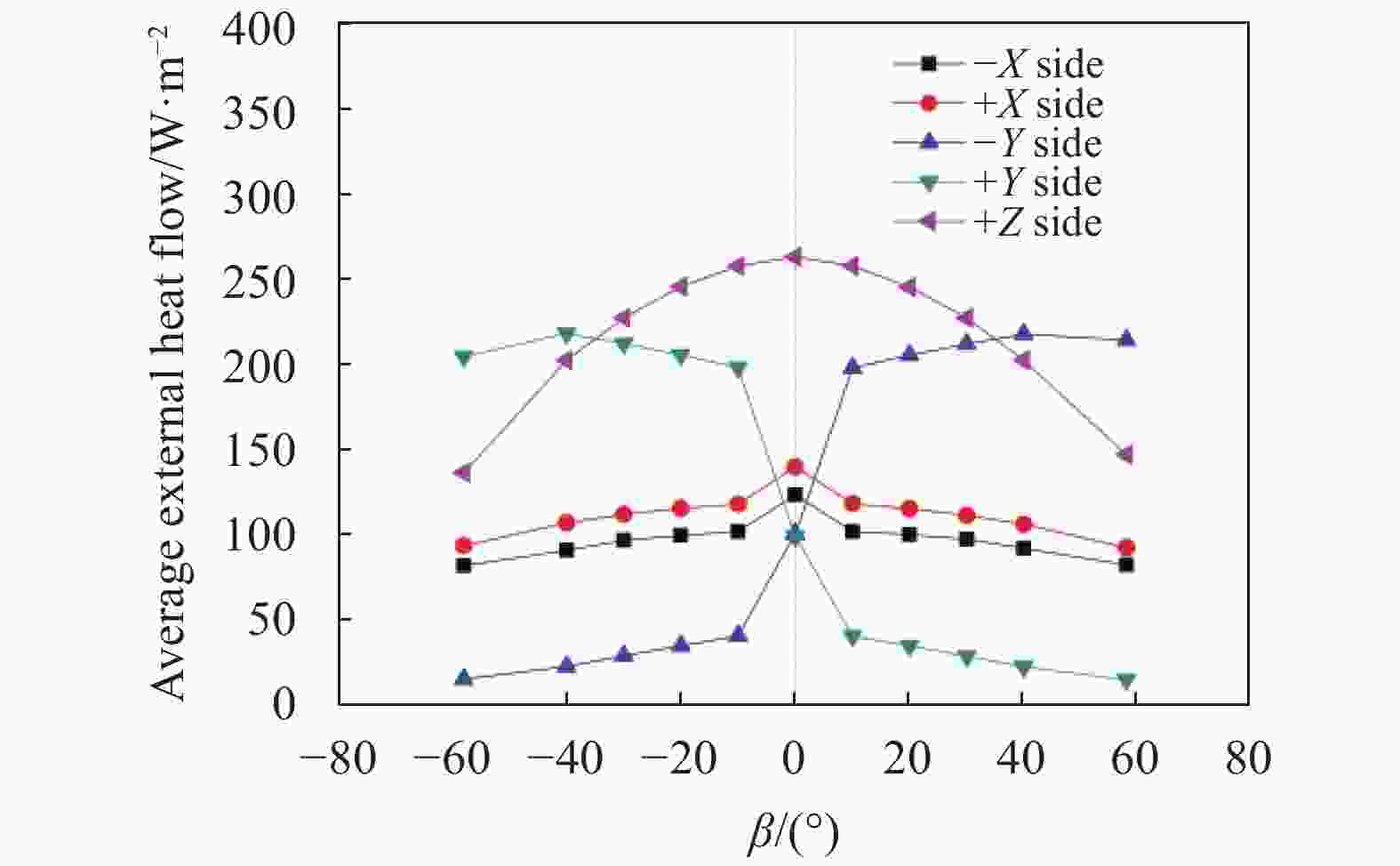







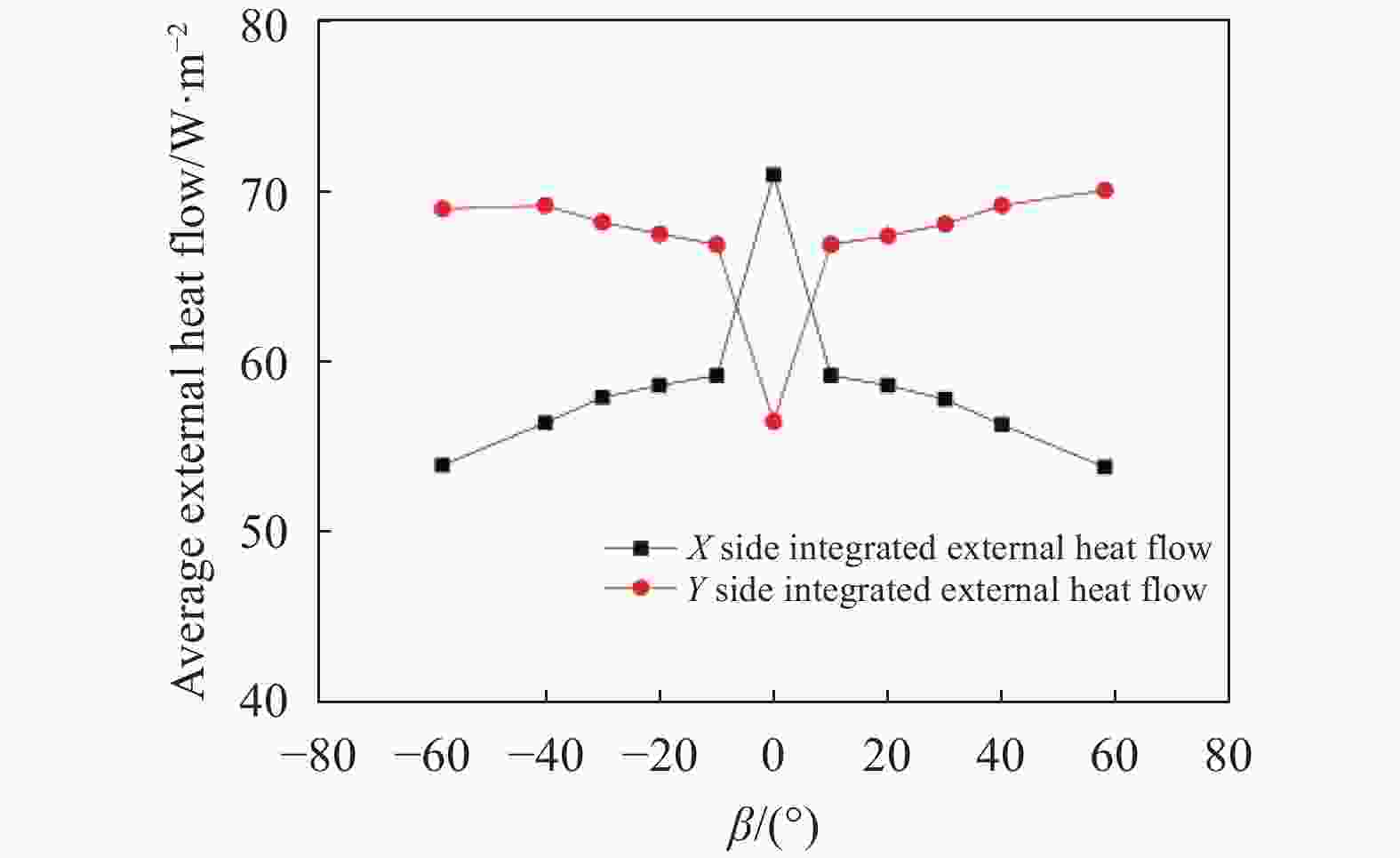
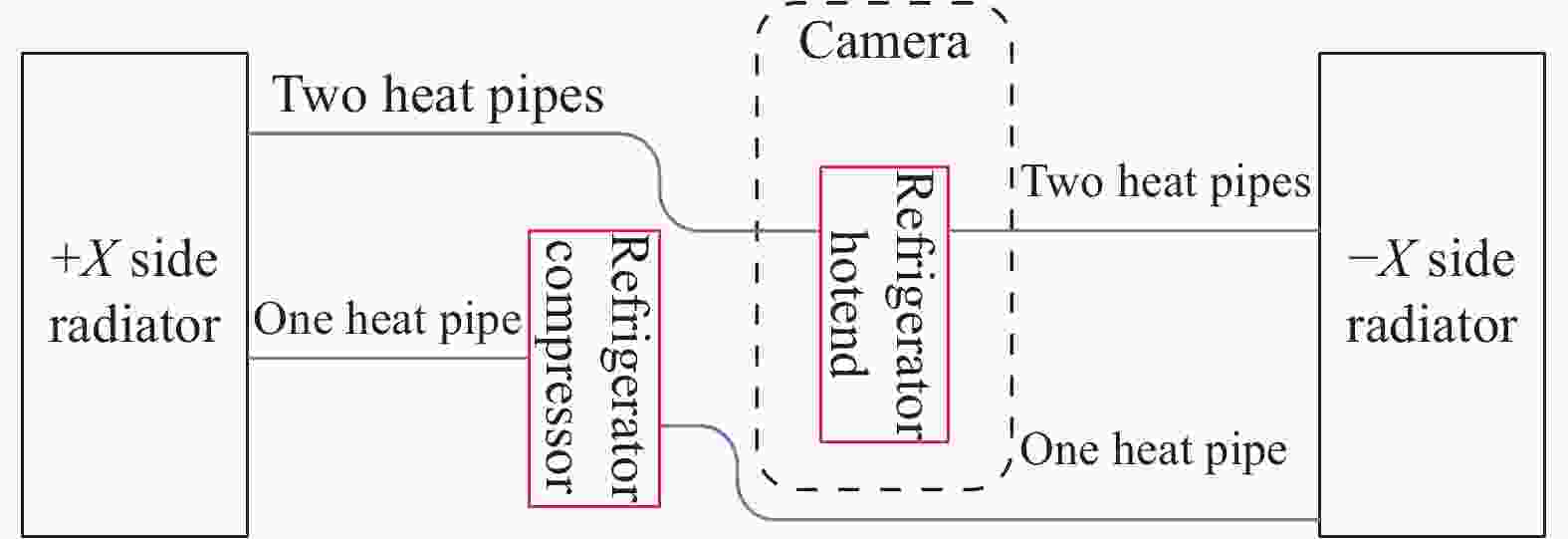
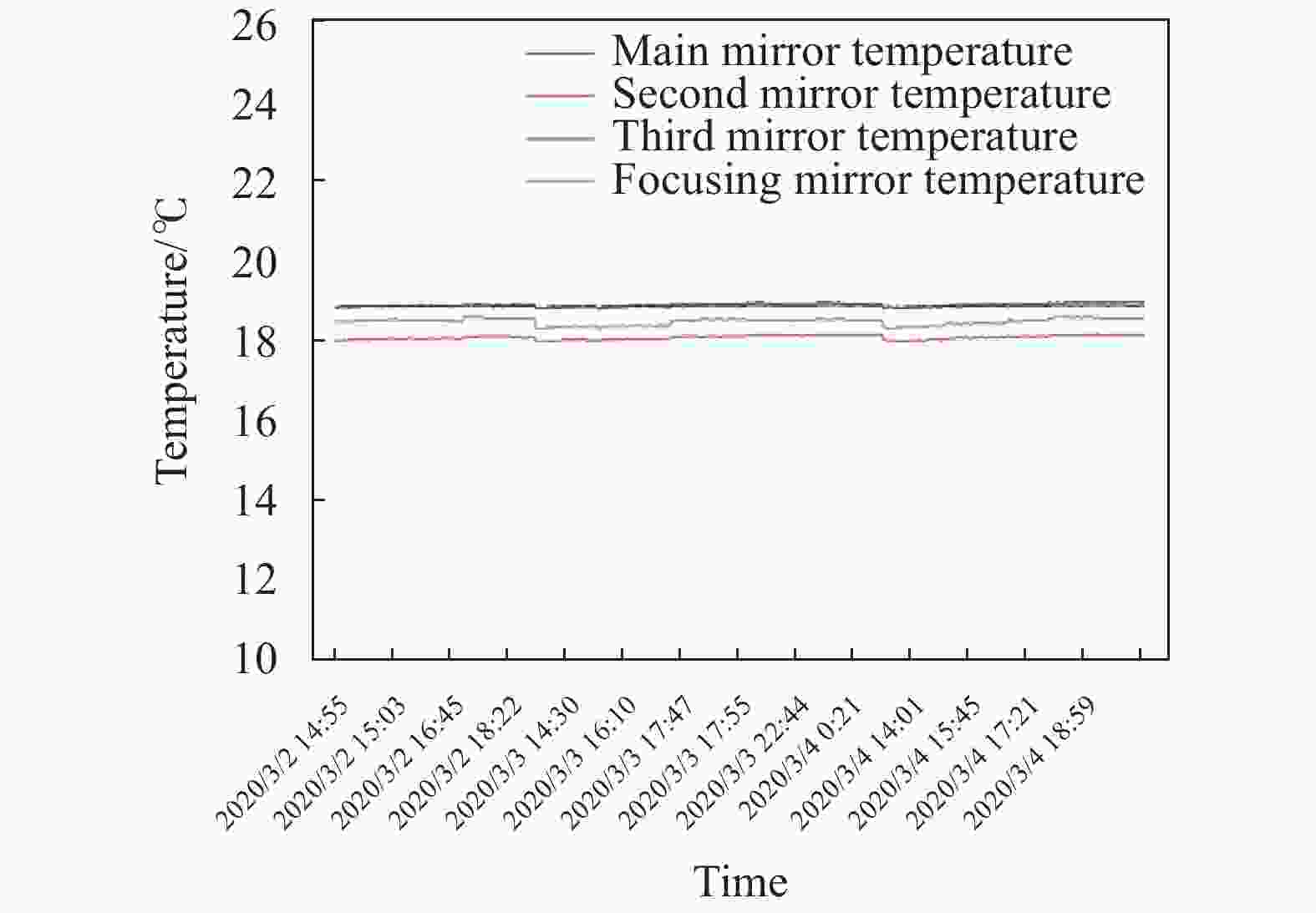
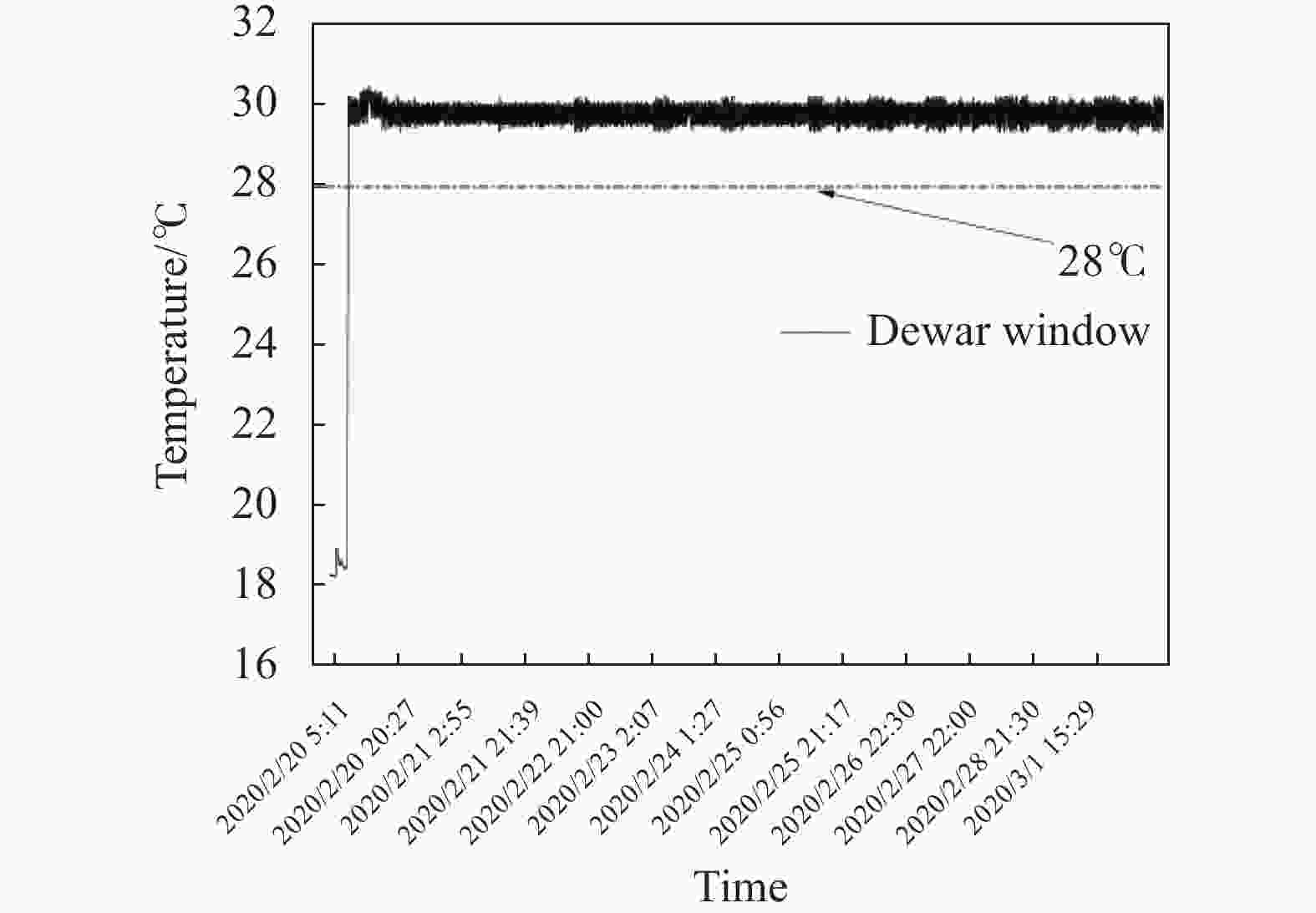

 DownLoad:
DownLoad:

